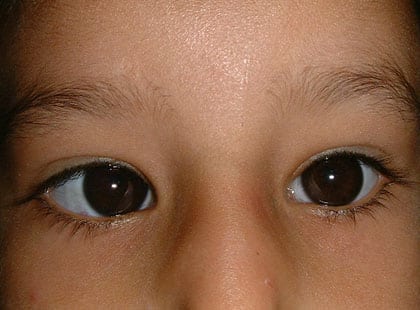Treatment of Squint

Treatment of squint
Strabismus or squint is the deviation of the axis of vision for one eye from the other, meaning that the direction of the right eye differs from the left eye
In most cases, the squint appears in childhood with an incidence ranging between 2-4%, and in a few cases the squint may appear in adults, and the strabismus may be present permanently or intermittently, i.e. it appears sometimes and disappears at other times, and in cases of strabismus, the eye may It deviates in any direction: inward (about forget), outward (around a monster), or up or down. It can also appear in some children eyes after the treatment of congenital glaucoma.
And Dr. Ahmed Khalil examines the child with squint early, and in many cases the appropriate treatment of squint is the use of glasses for myopia or hyperopia and a cover for one eye, and this is completely sufficient for the complete treatment of squint in the child without the need for surgery, and on the other hand, if the squint is not treated early in children, the child It is prone to the occurrence of the so-called pixel of the eye, as it is not possible to fix the strength of vision in the lazy eye after that in any way, and for adults, the strabismus operation is the goal of which is to correct the position of the eyes so that there is no turning around, without this leading to a correction of vision in the weak eye
The causes of strabismus vary, including the following:
- Weakness in the muscles that move the eye or weakness in the nerve signal Link to the muscles of the eye
- that move the eye or weakness in the nerve signal Link to the muscles of the eye
- muscles that move the eye or weakness in the nerve signal Link to the
- Weakness in the muscles that move the eye or weakness in the nerve signal Link to the muscles of the eye







